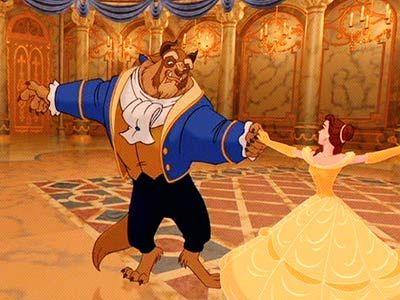
Merida, the lead character of Brave
With two female comedians, Tina Fey and
Amy Poehler, co-hosting the 2013 Golden Globes, it seemed only
appropriate that Pixar's first film about a young woman, Brave,
should win the gong for best animated feature film. Brave is the
seventh animation to win this category since its creation, and the sixth
put out by Pixar. Winning a Golden Globe will no doubt delight its
creators, but what wider impact has winning major awards had on
animation in general?
It's only relatively recently that
animated films have been recognised by the major awards ceremonies. The
Academy was the first to launch an animated feature film category in
2002. The Golden Globes followed suit in 2006. Even the Annie Awards,
which were set up in the US in 1972 to celebrate career contributions to
animation, only created a best animated feature category 20 years
later.
It was hoped at their inception that
these specialist awards for animation would bring increased attention to
the genre. It was certainly necessary: before the specialist category
was created, just one animation, Beauty and the Beast, in 1991, had even
been nominated for best picture. Toy Story 3
(2010) and Up (2009) have since been shortlisted. On the other hand,
some critics have argued that a dedicated award for animation actually
reduces the already-small chances of an animation being named best
picture.
However, although animated films have
been treated differently to feature films at awards ceremonies, they
indisputably rival them at the box office. Of the 50 highest-growing
films of the noughties, 11 were animated films. Shrek 2, distributed by
DreamWorks Animation, was the highest-growing film of 2002, taking just
under $920 million, and Disney Pixar's Toy Story 3 was the
highest-grossing film of 2010. Wallace and Gromit's Curse of the
Were-Rabbit, produced by Aardman and Dreamworks, went to No1 at the box
office worldwide on its release in October 2005. It then won an Oscar
the following March.
Brave was the eighth highest-grossing
film of 2012. But while Brave stood out because of its innovative
mother-daughter storyline and sumptuous Scottish setting, 2012 has seen a
slew of high-quality animated films. These include Sony Pictures' hammy
horror Hotel Transylvania, voiced by Adam Sandler and Selena Gomez, and
Rise of the Guardians, a 3D fantasy adventure featuring Hugh Jackman,
which was also well-received. Frankenweenie, Tim Burton's stop-motion
animation, was released as the director was made a fellow of the BFI.
Stuart Messinger, Award Leader for
Animation at Staffordshire University tells The Telegraph it's also been
a winning year for British animation talent. "It's fantastic to have
the UK represented [in the awards nominations]. Frankenweenie was
shot at Three Mills Studios in London, The Pirates! In an Adventure
with Scientists! is from a British studio (Aardman) and ParaNorman's
also got a predominantly British team and is co-directed by Brit Chris
Butler."
But with nominated films already triumphing at the box office, does a gong greatly increase audience awareness and sales?
There is evidence of DVD sales spiking
around the Oscar awards ceremony for winning films. Toy Story 3 saw an
increase in sales of 449.2% the week before it won in 2010, and Spirited
Away's sales increased a whopping 35,132% a week after its win in 2003.
But these are largely exceptions to the rule: Ratatouille, which won
the Oscar for best animated film in 2008, did not see an associated
uplift in sales. In fact, its sales dropped 84% during awards season.
However, an awards win does help to
build an animated film's standing within the industry. Messinger says
that "it certainly helps put you on the map. It's an internationally
recognised accolade and the global press coverage which follows helps
raise the profile of what is essentially a niche art form."
"While people would have heard of the
Disney Pixar studio, Brave winning a Golden Globe will put it and
animated film in the public consciousness."
However, if cinema-goers are impressed
by awards, studio-owners are even more enamoured of them. According to
Messinger, it's within the industry that the effects of a win are really
felt, "When Howl won an Oscar, it put Studio Ghibli on the map and
cemented relationships with the Disney studio who distributed it."
Rango, 2012's Oscar winner starring Johnny Depp, led to Paramount
Pictures announcing a new animation branch. Paramount Animation will be
releasing its first animated film, The Spongebob SquarePants Movie 2, in
2014.
Peculiarly, Brave's Scottish setting has
caused the film to have a significant impact on the country's tourist
trade, which may also indirectly benefit from its win at the Globes.
While the film was produced in Pixar's Californian studios by an
American team, the film is set in Scotland and has a strong British
voice cast, including Julie Walters, Emma Thompson, Billy Connolly and
Robbie Coltrane.
Mike Cantlay, Chairman of Scotland's
tourism organisation VisitScotland, told The Telegraph that he thought
the film would bring in an additional £140 million to the Scottish
economy. Footage from Brave was incuded in an August 2012 ad campaign
for VisitScotland and the organisation launched a dedicated Brave website at the time of the film's release, complete with nearly 1,000 "Brave travel experience" holiday packages.
The glory of winning a gong undeniably
adds lustre to the animated films involved - even for Pixar, which has
plenty of awards lining its shelves. However, it is no longer true that
animated films need a leg-up at the box office: the biggest and best,
like Brave, are already enormously popular with film fans. Indeed, the
biggest beneficiary since the introduction of dedicated awards has been
the animated film industry itself. Specialist categories for animation
have meant that at least half a dozen animations a year are discussed in
the same breath - and with the same seriousness - as the nominees for
the other major awards.


 加好友
加好友  发短信
发短信

 Post By:2013/1/17 11:30:09
Post By:2013/1/17 11:30:09


 加好友
加好友  发短信
发短信

 Post By:2013/1/17 11:30:35
Post By:2013/1/17 11:30:35







